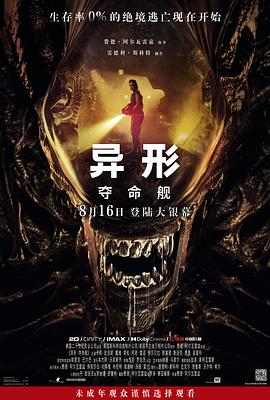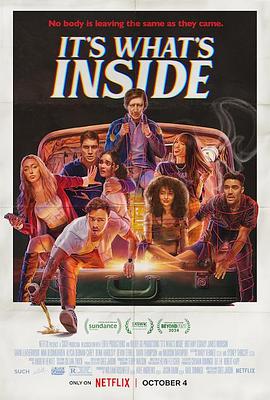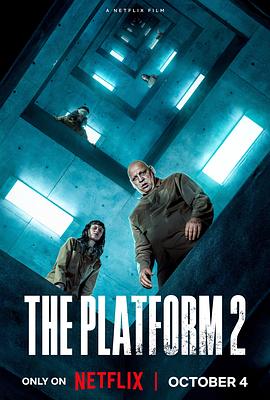
- wjm3u8
猜你喜欢
2024
0.0分
科幻片
TC
2024
0.0分
科幻片
卡莉·史派妮 戴维·荣松 阿奇·雷诺 伊莎贝拉·莫塞德 斯派克·费恩 吴爱玲 丹尼尔·贝茨 伊安·霍姆 特雷沃·纽林 罗伯特·勃洛克茨基 安妮玛丽·格里格斯 罗茜·伊德 索玛·西蒙 本斯·欧科克 维克托·欧利祖
/
影片时间线设定在1979年第一部《异形》与1986年的续集《异形2》之间,围绕一群年轻而勇敢的太空殖民者展开。讲述他们为逃离外星采矿殖民地的沉闷生活,在冒险探索一座废弃的太空站时,意外遭遇了宇宙中最可怕的生命体——异形。狭窄幽暗、危机四伏的空间站中,大逃杀的序幕已经被无情拉开,人类再次成为异形生物捕猎的目标。在无尽的黑暗与死亡威胁的笼罩之下,太空探险队员们能否在每一次心跳的瞬间,察觉到未知生物潜..
HD
2024
0.0分
科幻片
TC抢先版
2024
0.0分
科幻片
布莱特妮·奥格拉迪 詹姆斯·莫罗西尼 阿莉西娅·戴柏南·凯里 德文·特雷尔 嘉文·莱特伍德 蕾娜·哈迪斯蒂 妮娜·布隆加登 大卫·汤普森 麦蒂森·达文波特 Myhraliza Aala Tyrone J. Criss A. Brian Daniels Francisco Diego Garcia Tommy Hestmark Timothy Krabill Jesaar Landavaso 海莉·
/
一名疏远已久的朋友带着一个神秘的手提箱出现,里面装着一个可以诱导身体交换的神秘装置,让这次婚前派对变成了一场存在主义的噩梦。在诱惑之下,这群人参与了一场扭曲的游戏,发现了隐藏的真相,唤醒了被压抑的欲望和根深蒂固的怨恨。随着谎言和令人震惊的揭露席卷他们的生活,《开箱灵魂》通过脑洞大开的剧情层层剥开谜团。格雷格·雅丹的处女作曾在圣丹斯和西南偏南电影节上收获好评如潮,融合了惊悚、黑色喜剧和科幻元素,叙..
HD
2024
0.0分
科幻片
HD
2024
0.0分
科幻片
瑞安·雷诺兹 / 休·杰克曼 / 艾玛·科林 / 马修·麦克费登 / 乔恩·费儒 / 莫蕾娜·巴卡琳 / 罗伯·德兰尼 / 莱斯利·格塞斯 / 克里斯·埃文斯 / 亨利·卡维尔 / 达芙妮·基恩 / 詹妮弗·加纳 / 查宁·塔图姆 / 韦斯利·斯奈普斯 / 布蕾克·莱弗利 / 乌米·马萨库 / 克里斯·海姆斯沃斯 / 亚伦·斯坦福 / 泰勒·梅恩 / 卡兰·索尼 / 布里安娜·希德布兰德 / 忽那
/
史上最另类超级英雄、语不惊人死不休的死侍(瑞安·雷诺兹 Ryan Reynolds 饰)睽违六年终于万众瞩目重返大银幕,更首度加入漫威电影宇宙!除了与老搭档钢力士、负音波少年弹头和雪绪再度聚首,更将与睽别15年的金钢狼(休·杰克曼 Hugh Jackman 饰)二度并肩作战再续兄弟情,时间管理局找上门带走他也从容不迫,并自认只有自己能当漫威救世主,改写漫威电影宇宙!
HD
《造物的奇迹》剧情介绍
6080提供影视作品造物的奇迹高清全集在线观看的影视全集网,科幻片《造物的奇迹》全集作品的导演是Hanns Walter Kornblum ,由Margarete Schön Theodor Loos Paul Bildt Margarethe Schlegel Oscar Marion Willy Kaiser-Heyl 主演,造物的奇迹在豆瓣的评分为0.0,本片由小编于2024-09-15 02:16更新,希望大家喜欢,可以把《造物的奇迹》推荐给你朋友,本作品的地址为 http://www.cn-cnc.com.cn/movie/11827.html
《造物的奇迹》简介:Wunder der Schöpfung is an extraordinary, fascinating Kulturfilm trying to explain the whole human knowledge of the 1920s about the world and the universe. 15 special effects experts and 9 cameramen were involved in the production of this film which combines documentary scenes, historical documents, fiction elements, animation scenes and educational impact. It its beautifully colored, using tinting and toning in a very elaborated way. Some visual ideas in the sequences with a space shuttle visiting different planets in the universe seem to have to be the inspiration for Stanley Kubrick's 2001 A Space Odyssey. In the context of Germany's Kulturfilm phenomenon, Wunder der Schöpfung was among the greatest achievements of the 1920s. The production was constructed, rehearsed, and shot over a period of two and a half years, under the supervision of Hanns Walter Kornblum. The idea to describe the universe and man's place in it well suited UFA's Grossfilm mentality, one year before the Metropolis catastrophe. Hundreds of skilled craftsmen participated in the project, building props and constructing scale models drawn by 15 special effects draughtsmen, while 9 cameramen in separate units worked on the historical, documentary, fiction, animation, and science-fiction sequences. Without star roles or even protagonists, the film's plot is crowded with meticulously structured and skillfully acted single scenes an artful mosaic of small vignettes. No less than four credited university professors ensured the factual background behind the scientific and historical events portrayed. The film's symbol of progress and the new scientific era is a spacecraft, travelling through the Milky Way, making all the planets and their inspiring worlds familiar to us, with the extravaganza of their distinctive features. The film's educational intentions, however, become steadily more obscure, humorous, or even campy as this popularization project proceeds. With the excuse of presenting the end of the world a not-so-new concept as a new, undeniably scientific truth, the film veers happily along a new path, displaying detailed apocalyptic scenes of the end of mankind. For today's audiences, this amazing film demonstrates how the universe was comprehended in the 1920s, and how that view was sold to contemporary audiences.





